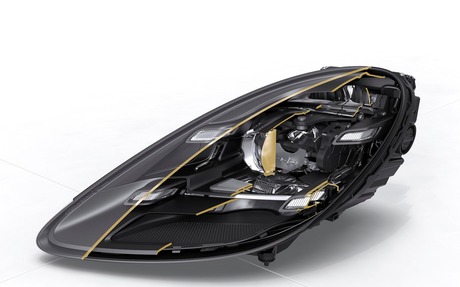2017 Porsche 718 Boxster: Singing to the Tune of a New Engine
MARSEILLE, France — The Boxster concept was first unveiled in 1993. More than 24 years have passed and this attractive cabriolet is now bringing the four-cylinder engine back into the Porsche line-up. This configuration was last seen in the 968, but now that fuel economy and carbon dioxide emissions are top-of-mind, it’s time to bring it back.
This roadster is rooted in the same philosophy that inspired the 1956 550 Spyder, which sped to more than 1000 victories, including the Targo Floria and the legendary 24 Hours of Le Mans. The Boxster was revamped in 1996 as well as in 2004 with the 987. Its sister, the Cayman, was released the following year. In 2009, the PDK transmission was added to the Boxster. And then we saw the GTS come out in 2014 and the return of the Spyder last year.
Refreshed looks
The 2017 version of the Boxster comes with a fair amount of changes. Only the two trunklids, the windshield and the windblocker have been updated, while the rest is all-new. Look carefully at the body panels and you’ll see they are cut differently than in the past. What’s more, the side air vents are better surrounded. Meanwhile, the front treatment features more pronounced moulding with impressive air intakes. The headlamps were also revamped, with a four-point design signature used for the daytime running lights.
Similar changes are seen in the rear, with a spoiler integrated with the taillight section and a redesigned diffuser. Although many aspects of the interior look familiar, the steering wheel stands out as different. The biggest change inside the vehicle is the infotainment screen. Porsche is finally up with the times, having added a touchscreen. Combined, these enhancements give the vehicle a more grounded look, even though the track width hasn’t changed.
Return of the four-cylinder engine
The 718 is built on a chassis whose ground clearance can lower by 20 mm, depending on the selected driving mode. The electromechanical steering is 10% more direct for improved agility, as if it weren’t agile enough already. Driven by one of its Stuttgart-based engineers, the 718 proved it could change lanes at very high speeds without batting an eyelash.
But the biggest change is the return of the four-cylinder engine. The entry-level version comes with 2.0 litres of displacement and delivers 300 horsepower. On the S trim, output climbs to 350 horsepower thanks to a variable-geometry turbocharger. Porsche is proud to be the only manufacturer that offers this technology on its gas-powered production models.
A six-speed manual transmission is available, though a dual-clutch PDK is your better bet. According to Porsche, fuel consumption is around 6.9 L/100 km in the base trim, and 7.3 L/100 km in the S. That’s a one-litre advantage over the previous generation, even though the new 718 is slightly heavier. But where you’ll notice a real difference is with the torque. From a cold start, the Boxster races to 100 km/h in less than 4.7 seconds, and the S takes just 4.2.
After a few laps inside the car, we could tell just how efficient the new drivetrains are. The engine sound isn’t the most inspired, but we’ll have to learn to live with it. Let’s just say that the Boxster S is much more intriguing with more convincing accelerations and pick-up.
To enjoy your 718 the way you like it, you have three driving modes to choose from: Normal, Sport and Sport Plus. There’s also an Individual mode on Sport Chrono package available on the S model that allows you to customize the parameters.
Now, since it’s going to be tough to seduce buyers with the coarse sound of the four-cylinder engine, Porsche should encourage buyers to test drive the vehicle. That’s the best way to discover the real potential of this new generation. Especially the S trim. At any rate, we’ll have to get used to these drivetrains—they’re here to stay.
